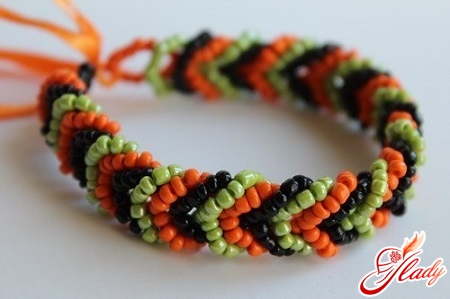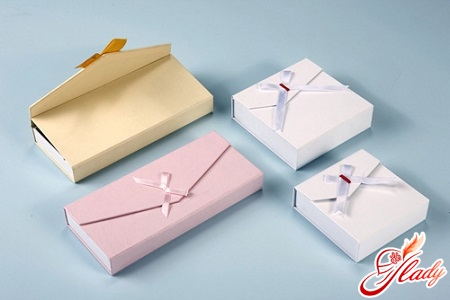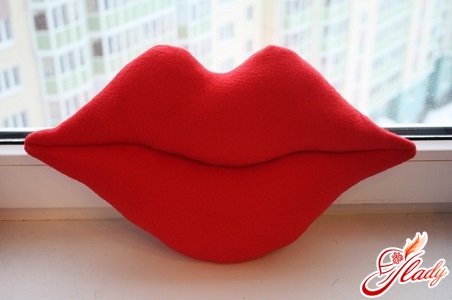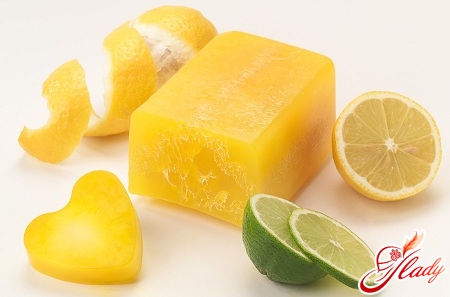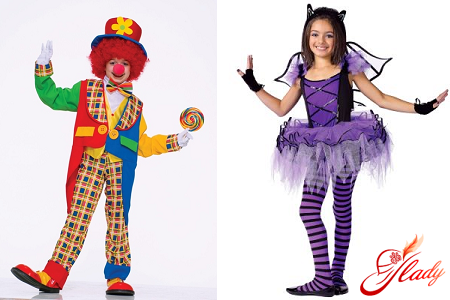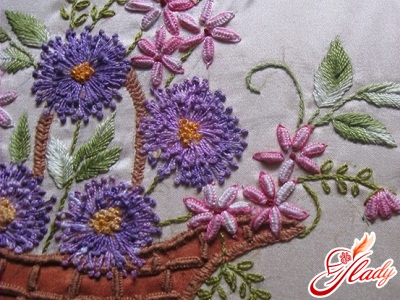 They say that handicrafts are going through a revival todaya real boom: it is fashionable, profitable and interesting. Yes, it is probably so. But boom is boom, but the hobby of handicraft creativity has always been popular, and real hand-made has always been in demand (it was only called differently). And even new handicraft techniques are not really new at all, but only secrets of old craftswomen adapted to modern technologies. But among the newfangled hobbies of needlewomen there are also such techniques, which, as they say, are “for all times”. They seem only ultra-fashionable, but in fact have a rich and long history and have reached us practically unchanged. Ribbon embroidery is one of these types of handicrafts. Of course, such embroidery is simply “indescribable beauty”. It looks rich and elegant, will decorate anything. But also, as it turns out, this is one of the simplest ways of embroidery (at least, so the embroiderers themselves say). How true is this statement and to whom do we owe such an amazing type of needlework as ribbon embroidery? Let's find out.
They say that handicrafts are going through a revival todaya real boom: it is fashionable, profitable and interesting. Yes, it is probably so. But boom is boom, but the hobby of handicraft creativity has always been popular, and real hand-made has always been in demand (it was only called differently). And even new handicraft techniques are not really new at all, but only secrets of old craftswomen adapted to modern technologies. But among the newfangled hobbies of needlewomen there are also such techniques, which, as they say, are “for all times”. They seem only ultra-fashionable, but in fact have a rich and long history and have reached us practically unchanged. Ribbon embroidery is one of these types of handicrafts. Of course, such embroidery is simply “indescribable beauty”. It looks rich and elegant, will decorate anything. But also, as it turns out, this is one of the simplest ways of embroidery (at least, so the embroiderers themselves say). How true is this statement and to whom do we owe such an amazing type of needlework as ribbon embroidery? Let's find out.
History of embroidery ribbons
The art of sewing with silk ribbons is veryancient, and it originated in medieval Italy, from where it gradually came to France, where the real triumph of this embroidery technique took place. And the whole point is that in this romantic time (remember the novels of Dumas) the frivolous Rococo style with its inherent splendor, flashiness and pretentiousness was in fashion. And the trendsetter of that time, Louis XV himself, was a passionate lover of embroidery. True, it is not reliably known whether he himself invented the technique of embroidery with ribbons, or borrowed this idea? But the fact remains a fact. It was at the court of Louis that ladies began to flaunt dresses decorated with satin ribbon embroidery. After the dresses came the turn of underwear, and then, so to speak, royal embroidery began to decorate hats, umbrellas, blankets, lampshades and all sorts of necessary and unnecessary ladies' (and not ladies') things. But all this happened in the nineteenth century. Two hundred years! It took a long time, of course, but it was a real heyday of the art of ribbon embroidery. What wasn’t decorated this way: royal robes, military uniforms, dresses of commoners, camisoles of nobles, and clothes of priests. At first, this technique spread throughout Europe, where it was used to decorate clothes and interior items, and then it got to the New World, reaching America and Canada. After World War II, the art of ribbon embroidery was forgotten for a long time (women had other things to think about!). However, at the end of the twentieth century, interest in handicrafts as such and in the art of ribbon embroidery began to actively revive. Today, this type of embroidery is popular not only among hand-made craftswomen, but is even used in high fashion (almost like in the times of Louis XV)!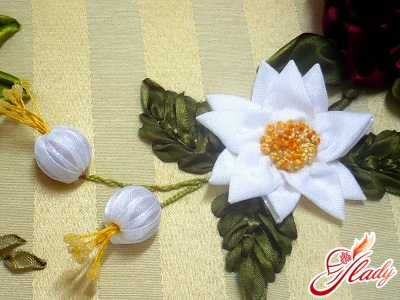
Tools for embroidery with ribbons
As the followers of Louis XV claim,Ribbon embroidery is not a particularly complicated art, but it is incredibly effective. And few materials and tools are required for this type of embroidery. However, special requirements are imposed on the types and quality of such tools. Ribbons. Silk, satin and moire ribbons are usually used for ribbon embroidery. Such ribbons, three to ten millimeters wide, can be purchased in specialized stores selling goods for handicrafts or in ordinary haberdashery. Special requirements for ribbons for embroidery are strength, small thickness and elasticity (they should not stretch much). In addition, ribbons intended for embroidery should have a characteristic silk shine and durable (resistant to washing) coloring. To check the ribbons for color fastness, they must be washed and ironed through a damp cloth. In fact, this procedure must be carried out before starting embroidery, even if you are confident in the quality of the ribbons. Fabric. If you are just about to master the technique of ribbon embroidery, it is best to start with regular canvas or fabrics with a uniform weave of threads (linen, cotton). By the way, this is the base that experienced embroiderers use to create panels and embroidered pictures. When decorating clothes with ribbons, there are no obvious restrictions on the choice of fabric texture. It can be thin silk, thick velvet, or knitted fabric. However, be prepared for the fact that fabrics that are too dense are difficult for this type of embroidery - ribbons can have difficulty passing through them. Needles. Well, what kind of embroidery can there be without a needle? And for ribbon embroidery, you need to approach the choice of this tool "with knowledge of the matter." For this type of embroidery, you need needles whose eye freely passes the ribbon and allows it to completely straighten out in the applied stitch. By the way, when choosing a needle, do not forget that the smaller its number, the thicker the needle itself. Using a needle that is too thin can cause the ribbon to lose its appearance while you are working, and it will quickly fray and become shaggy afterwards. A properly selected needle will prevent such unpleasant consequences and will make the work much easier. For embroidery, use thick needles with a sharp end and a wide eye (chenille needles) or tapestry needles, also thick and with a wide eye, but with a blunt end. For narrow two-millimeter ribbons, use the smallest needles (24), and for wide centimeter tapes, use needles from number sixteen. Hoops are also necessary for ribbon embroidery. Of course, with a certain amount of skill, you can do without them, but for the best result, the fabric needs to be stretched. For this type of embroidery, you can use regular round hoops or frame hoops. In addition to hoops, when embroidering with ribbons, you may also need small scissors, pins, a fabric marker, a thimble, a centimeter tape, and a ruler. And as additional materials - sequins, beads, bugles, seed beads.
Technique of embroidery ribbons
Ribbon embroidery of roses, asters, daisies, cornflowers,and any other flowers, buds and leaves allows you to achieve a simply enchanting effect. Volumetric, shiny, multi-colored, this embroidery looks truly royal. However, it is difficult to call this technique special, since it differs little from traditional embroidery with threads. The only difference is the use of a "ribbon stitch". The main stitches used in ribbon embroidery are as follows.
Useful tips for embroidery ribbons
- For accurate embroidery, the wizards are advised to first apply a pattern outline on the fabric, then make auxiliary stitches, and only then embark on the very embroidery with ribbons.
- For work it is desirable to use tapes no longer than seventy centimeters. Longer tapes in the process of work will be disheveled.
- Tapes width more than two centimeters for embroideryit is better not to use. In any case, they should not be put in the eye of a needle, and if necessary, you can add to the embroidery already ready flowers from wide ribbons.
- More effectively looks embroidery from different types of ribbons and several shades.
- Embroidery with satin ribbons will look good on all types of fabric, but decorative tapes should be used only for finishing.
- Embroidery from cotton strips, unlike embroidery with satin ribbons, is perfect for decorating bed linen or, for example, women's hats.
But no matter what type of tape you use, the main thing is– is a harmonious combination of the texture of the fabric, the type of product, the quality of the ribbons and the pattern itself. The uniqueness of this technology is in its immutability, unexpected simplicity of execution, special festivity and the effect of royal decoration. Master the handicraft beloved by the French king himself and feel like a queen! We recommend reading:




